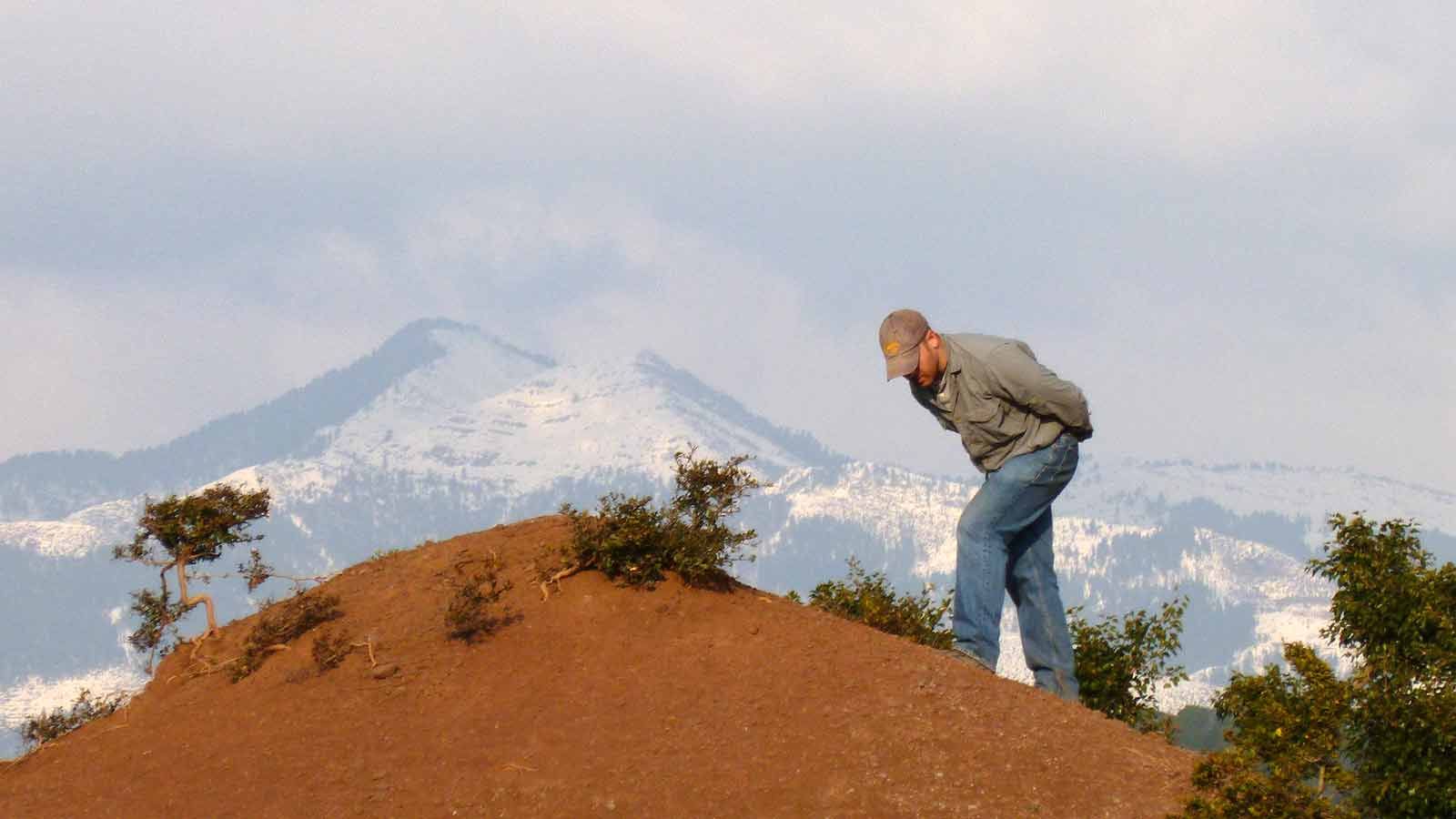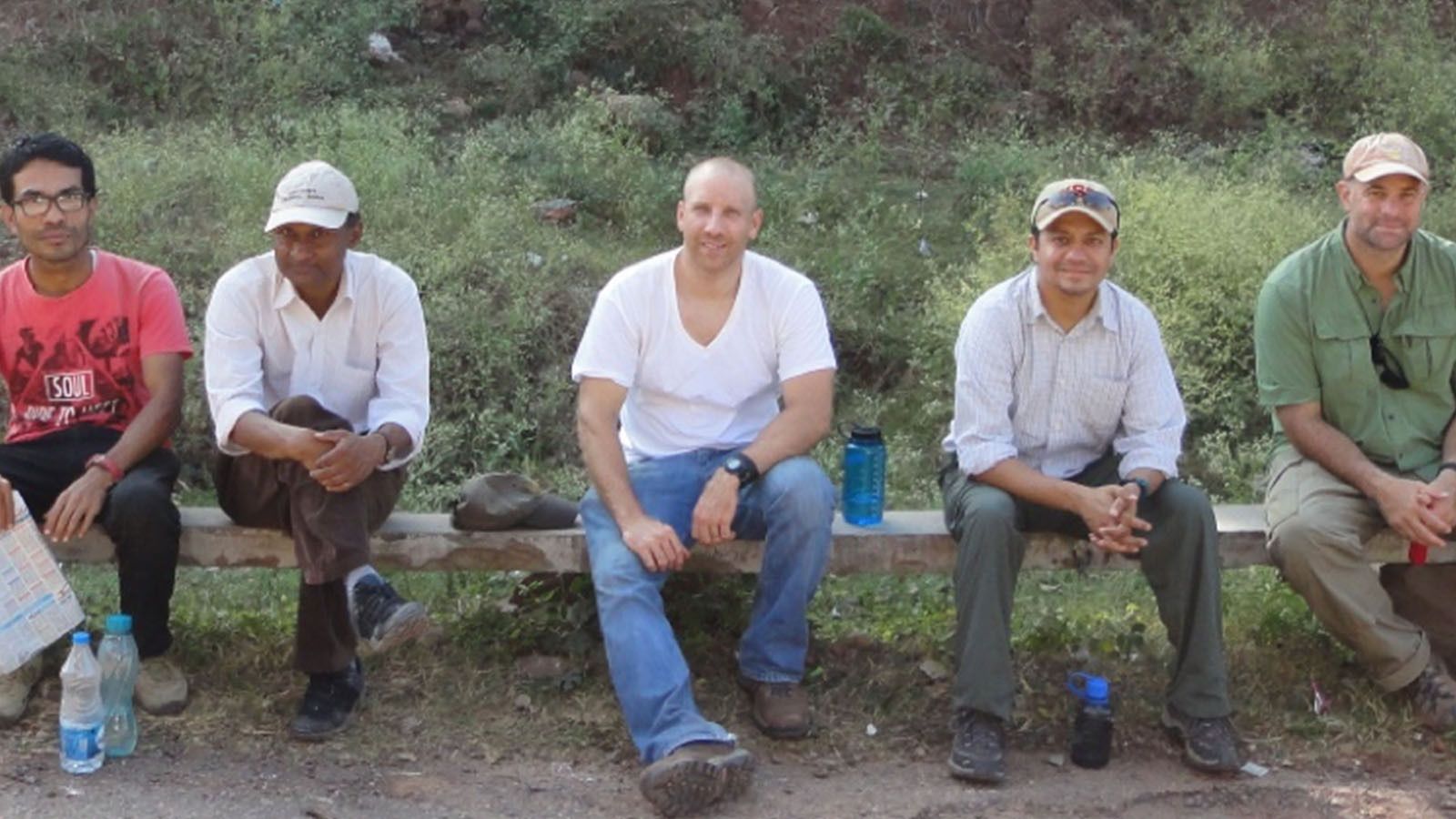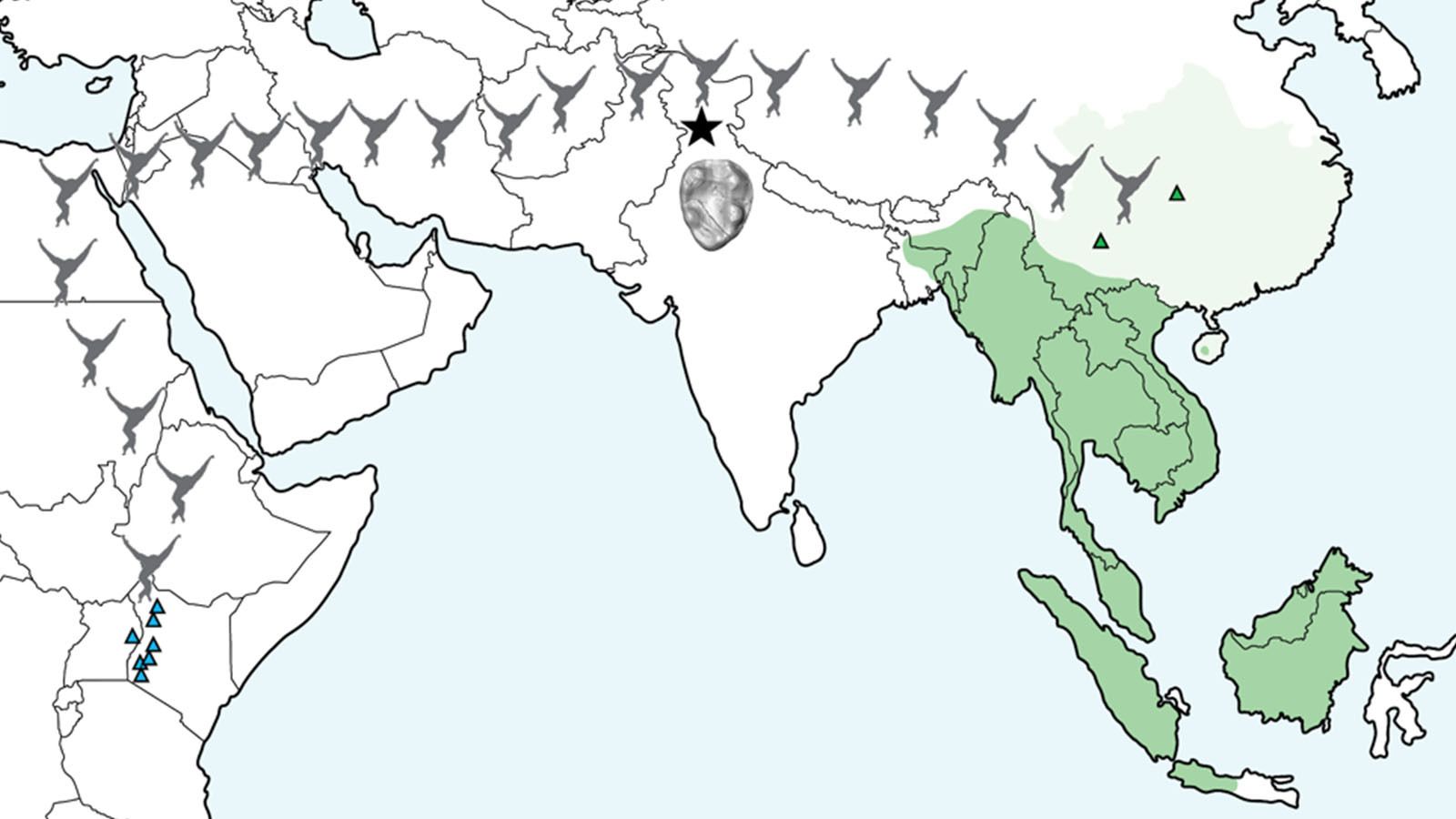A 13-million-year-old fossil unearthed in northern India comes from a newly discovered ape, the earliest known ancestor of the modern-day gibbon. The discovery by Christopher C. Gilbert, Professor of Anthropology at Hunter College, fills a major void in the ape fossil record and provides important new evidence about when the ancestors of today’s gibbon migrated to Asia from Africa.
The findings have been published in the article “New Middle Miocene Ape (Primates: Hylobatidae) from Ramnagar, India Fills Major Gaps in the Hominoid Fossil Record” in the peer-reviewed journal Proceedings of the Royal Society B.
The fossil, a complete lower molar, belongs to a previously unknown genus and species (Kapi ramnagarensis) and represents the first new fossil ape species discovered at the famous fossil site of Ramnagar, India, in nearly a century.
Professor Gilbert’s find was serendipitous. He and his co-authors, Chris Campisano, Biren Patel, Rajeev Patnaik, and Premjit Singh, were climbing a small hill in an area where a fossil primate jaw had been found the year before. While pausing for a short rest, he spotted something shiny in a small pile of dirt on the ground, so he dug it out and quickly realized he’d found something special.
“We knew immediately it was a primate tooth, but it did not look like the tooth of any of the primates previously found in the area,” he said. “From the shape and size of the molar, our initial guess was that it might be from a gibbon ancestor, but that seemed too good to be true, given that the record of lesser apes is virtually non-existent. There are other primate species known during that time, and no gibbon fossils have previously been found anywhere near Ramnagar. So we knew we would have to do our homework to figure out exactly what this little fossil was.”
Since the fossil’s discovery in 2015, years of study, analysis, and comparison were conducted to verify that the tooth belongs to a new species, as well as to accurately determine its place in the ape family tree. The molar was photographed and CT-scanned, and comparative samples of living and extinct ape teeth were examined to highlight important similarities and differences in dental anatomy.
In addition to determining that the new ape represents the earliest known fossil gibbon, Professor Gilbert adds that the age of the fossil, ~13 million years old, is contemporaneous with well-known great ape fossils, providing evidence that the migration of great apes, including orangutan ancestors, and lesser apes from Africa to Asia happened around the same time and through the same places.
Professor Gilbert and his colleagues plan to continue research at Ramnagar, having recently received a grant from the National Science Foundation to continue their ongoing search for ape fossils.
“In the heart of New York City, Hunter College is proud to have a dynamic program of physical anthropology, with focus on the human fossil record, primatology, and evolutionary theory,” said Jennifer Raab. President of Hunter College. “Chris Gilbert’s new fossil finding in India is just the latest in a growing list of Hunter discoveries and related analytic research.”
In addition to new primate specimens from Ramnagar, Professor Gilbert’s previous findings include rare fossil evidence of monkeys in Arabia, a new fossil ape species from Kenya, new fossil monkeys from South Africa (including the earliest known baboon), and a new species of monkey in the Democratic Republic of Congo.
Professor Gilbert is a professor of Anthropology at Hunter College and the Graduate Center (both of the City University of New York), and he also has appointments at the New York Consortium in Evolutionary Primatology and the American Museum of Natural History. His co-authors on the article are Alejandra Ortiz, of New York University and the Institute of Human Origins at Arizona State University; Kelsey D. Pugh, of the American Museum of Natural History; Christopher J. Campisano, of the Institute of Human Origins and the School of Human Evolution and Social Change at Arizona State University; Biren A. Patel, of the Keck School of Medicine and the Department of Biological Sciences at the University of Southern California; Ningthoujam Premjit Singh, of the Department of Geology at Panjab University; John G. Fleagle, of the Department of Anatomical Sciences at Stony Brook University; and Rajeev Patnaik, of the Department of Geology at Panjab University.
Professor Gilbert's research at Ramnagar was funded by the Leakey Foundation, the PSC-CUNY faculty award program, Hunter College, the AAPA professional development program, the University of Southern California, the Institute of Human Origins (Arizona State University), and the National Science Foundation. His Indian colleagues are further supported by the Indian Ministry of Earth Sciences and Science and Engineering Research Board.




